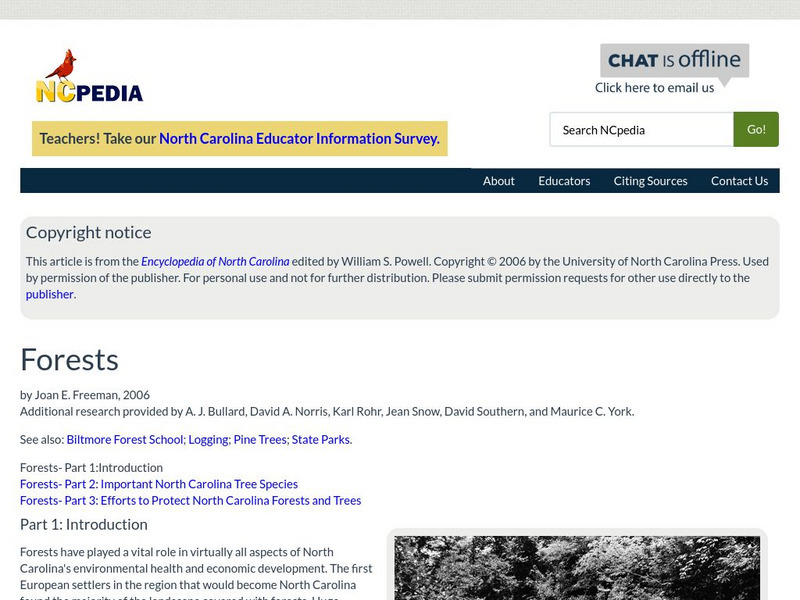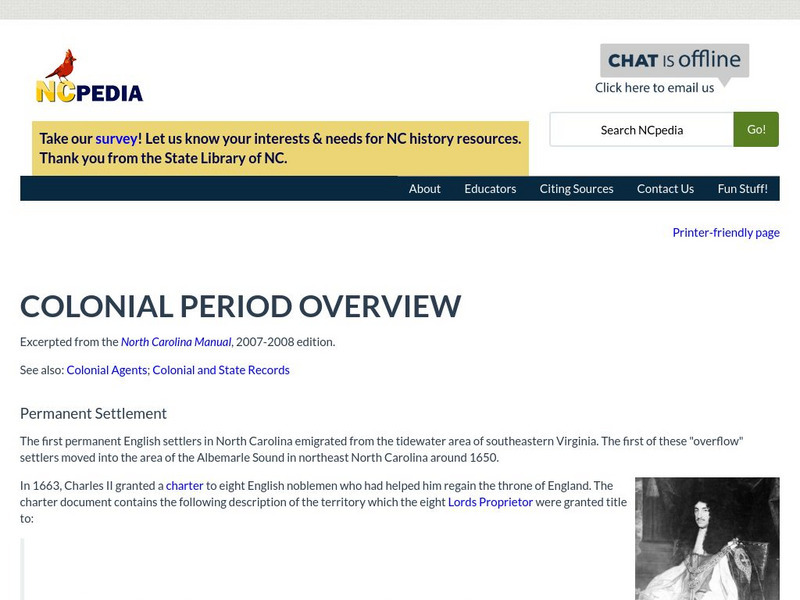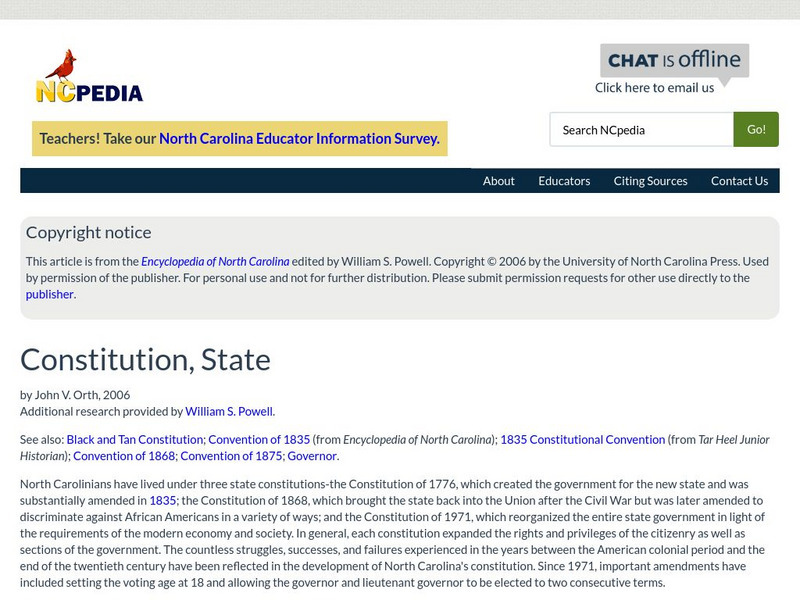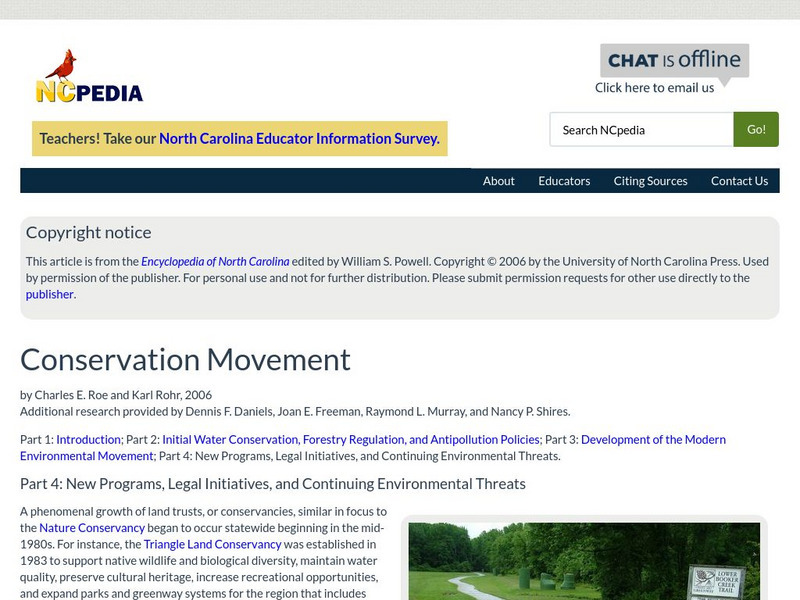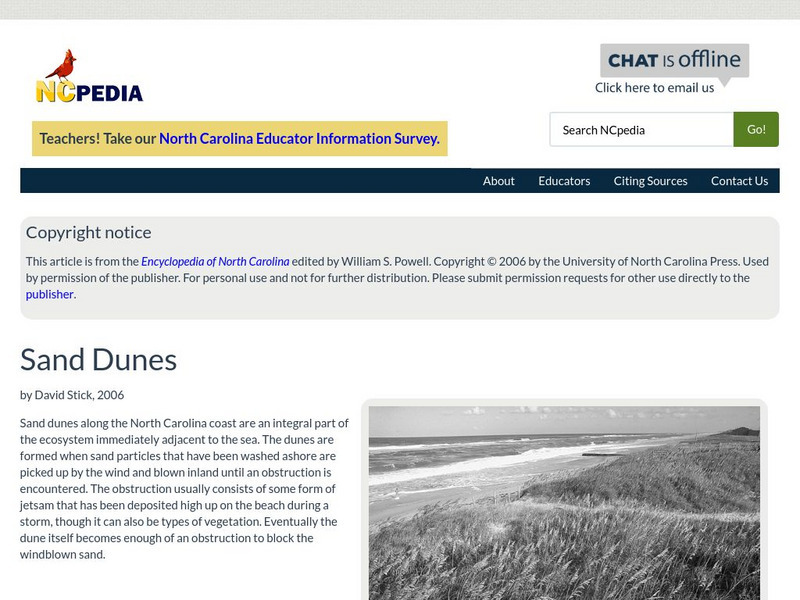State Library of North Carolina
N Cpedia: Forests
Forests have played a vital role in virtually all aspects of North Carolina's environmental health and economic development. The first European settlers in the region that would become North Carolina found the majority of the landscape...
State Library of North Carolina
N Cpedia: 1835 Constitutional Convention
Reforming the state's constitution was one of the most important and hotly debated political issues in antebellum North Carolina. The state's constitution of 1776, which remained largely unchanged until the convention of 1835, had...
State Library of North Carolina
N Cpedia: Canals
Since the eighteenth century, canals and canal building have been an important part of Tidewater, North Carolina history. It was seen as the state's best hope for overcoming natural barriers to coastal navigation and mercantile trade....
State Library of North Carolina
N Cpedia: Colonial Period Overview
The first permanent English settlers in North Carolina emigrated from the tidewater area of southeastern Virginia. The first of these "overflow" settlers moved into the area of the Albemarle Sound in northeast North Carolina around 1650....
State Library of North Carolina
N Cpedia: Scottish Settlers
Read about the history of Scottish settlers in North Carolina, who have been there since the beginning of permanent settlement.
State Library of North Carolina
N Cpedia: Constitution, State
North Carolinians have lived under three state constitutions - the Constitution of 1776, the Constitution of 1868, and the Constitution of 1971. In general, each constitution expanded the rights and privileges of the citizenry as well as...
State Library of North Carolina
N Cpedia: Convention of 1835
The constitutional convention of 1835 was convened to modify the North Carolina Constitution of 1776. Some provisions of the 1776 document were rooted in the colonial experience, and a growing segment of the population came to consider...
State Library of North Carolina
N Cpedia: Concervation Movement: Programs and Initiatives
A phenomenal growth of land trusts or conservancies, similar in focus to the Nature Conservancy began to occur statewide beginning in the mid-1980s. For instance, the Triangle Land Conservancy was established in 1983 to support native...
State Library of North Carolina
N Cpedia: Fontana Dam
Fontana Dam, the largest dam of the Tennessee Valley Authority (TVA) system, is located on the Little Tennessee River in Graham County. Completed in 1945, it is a gravity-type concrete structure 480 feet high, 2,365 feet long, and 376...
State Library of North Carolina
N Cpedia: Sand Dunes
Sand dunes along the North Carolina coast are an integral part of the ecosystem immediately adjacent to the sea. The dunes are formed when sand particles that have been washed ashore are picked up by the wind and blown inland until an...
State Library of North Carolina
N Cpedia: Windmills
Windmills were so common along the North Carolina coast at the time of the Civil War that Charles F. Johnson, a Union soldier stationed on Hatteras Island, later wrote that there were "a greater number than I supposed were in existence...
State Library of North Carolina
N Cpedia: Coal
Coal in North Carolina is limited to two belts of Triassic sediment: the sporadic Dan River belt and the larger Deep River belt, which runs along the Deep River in Lee, Moore, and Chatham Counties. Read on to learn about the uses and...
State Library of North Carolina
N Cpedia: Dismal Swamp Canal
Dismal Swamp Canal, believed to be the oldest existing excavated waterway in America, runs generally north and south for 22 miles between Deep Creek, Va., and South Mills, N.C. The canal connects the Elizabeth and Pasquotank Rivers,...
State Library of North Carolina
N Cpedia: Gold Mining in the Uwharries
In the early decades of the 1800s, the southern Piedmont's gold mines attracted prospectors, investors, and miners. Tar Heel gold had first been found in 1799 on John Reed's farm in Cabarrus County, several miles west of the Uwharrie...
State Library of North Carolina
N Cpedia: Pocosins
Pocosins are naturally occurring freshwater evergreen shrub bogs or wetlands of the southeastern coastal plains. In 1962 pocosins still covered nearly 2.25 million acres in North Carolina-accounting for almost three-quarters of the...


